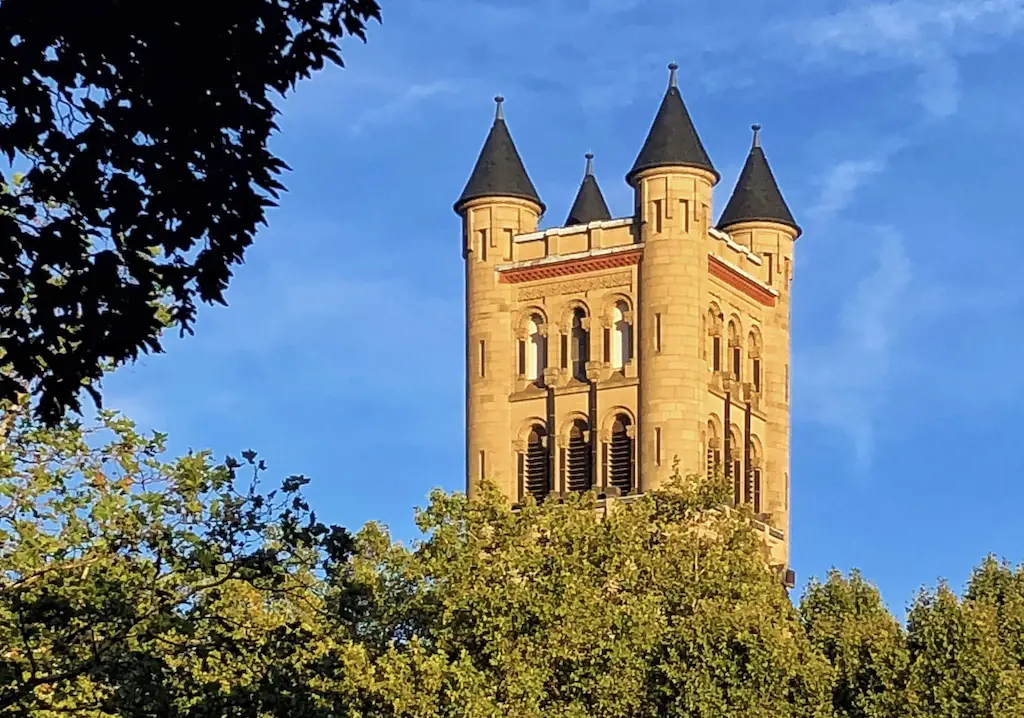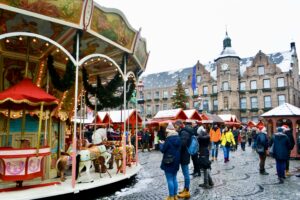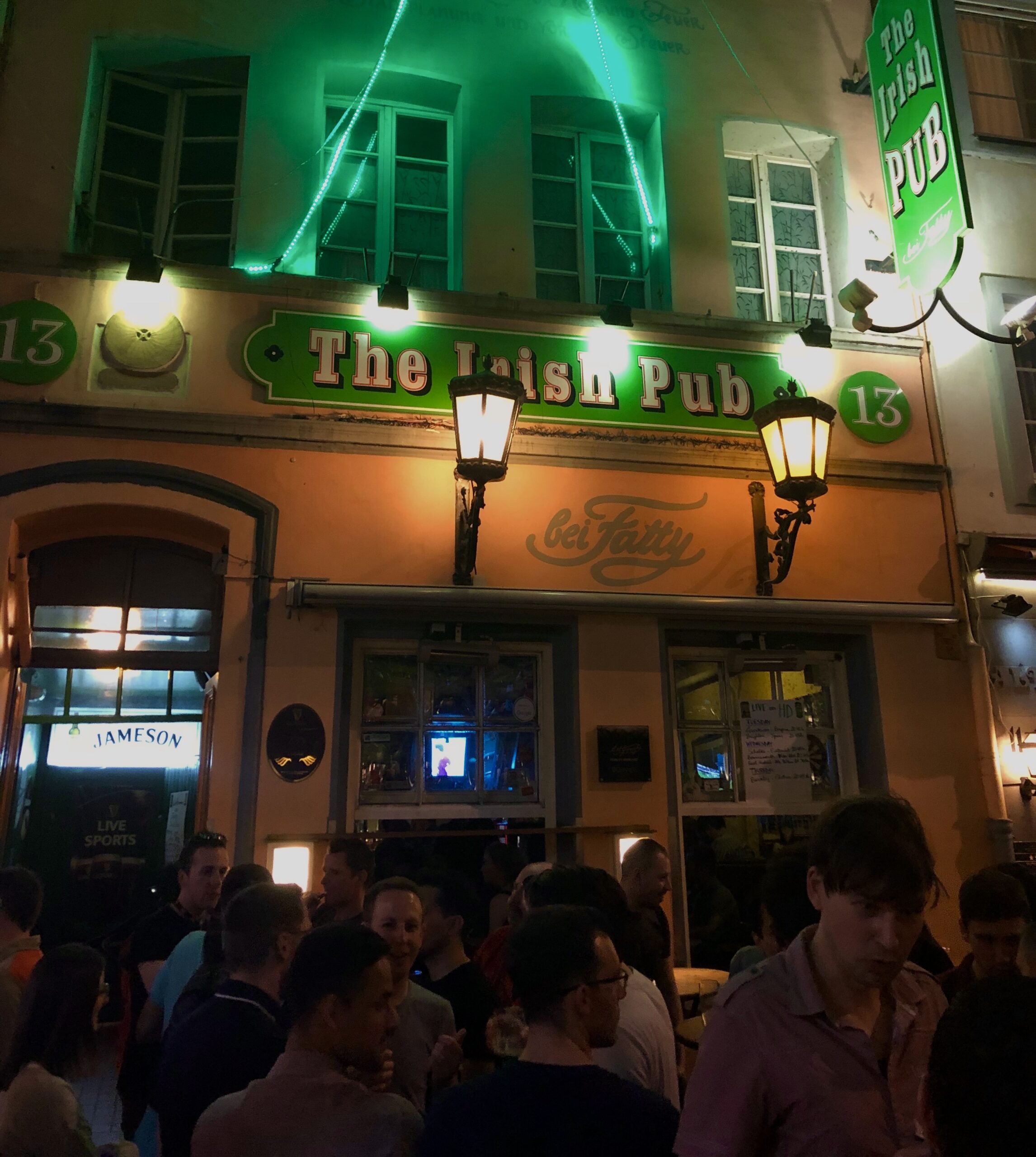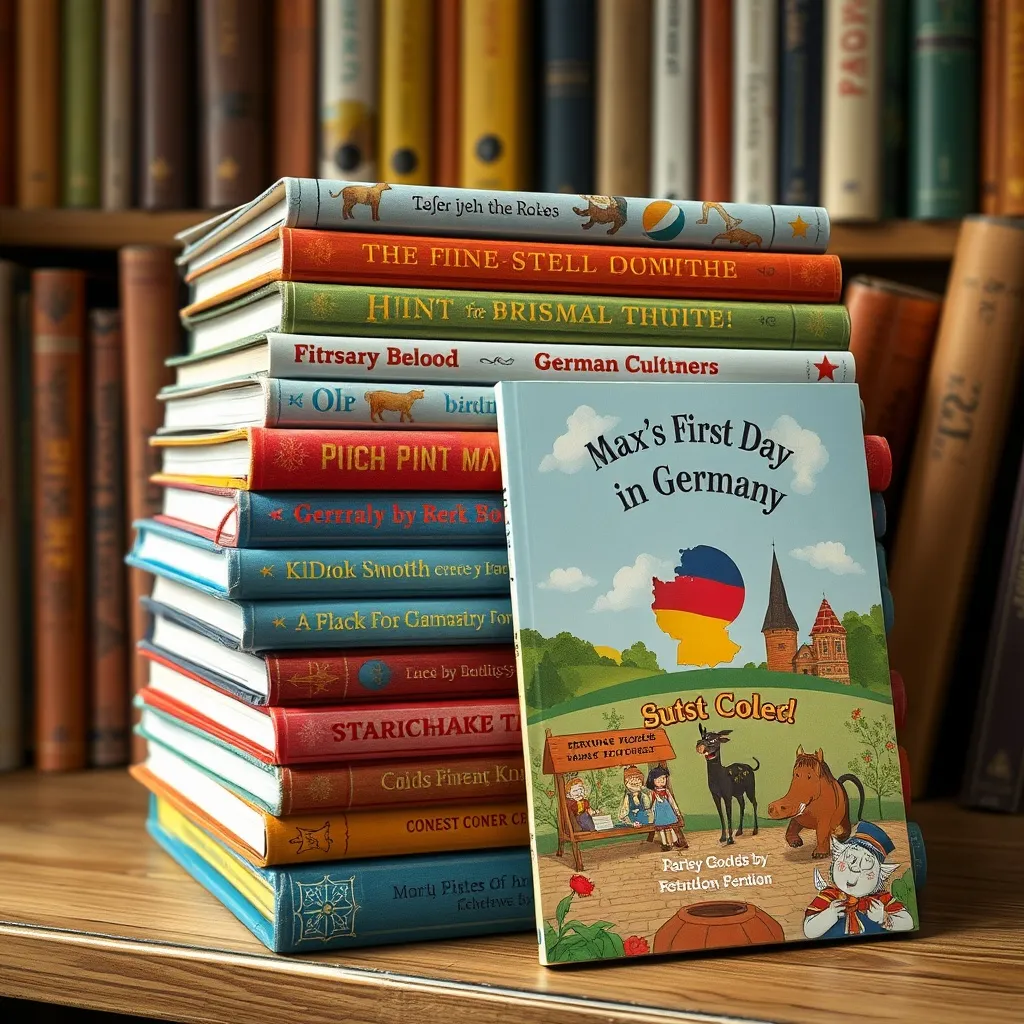We have many beautiful neighborhoods in Düsseldorf to explore, but the stories behind them might be even more worthy of exploration.
Take Friedrichstadt for example, did you know that the streets in this district have a checkerboard arrangement?
This is because the city was expanded in the south in the middle of the 19th century. And in 1854, Friedrichstadt was planned on the drawing board. The district got its name from King Friedrich Wilhelm IV of Prussia. The locals first called the district “Walachai”, probably because the ground in the area was swampy.
The development of the district progressed steadily and soon Friedrichstadt was seen as a cheap district to live in. So officers or officials moved here to settle down comfortably. At that time, Friedrichstadt was called the “satisfied south”.
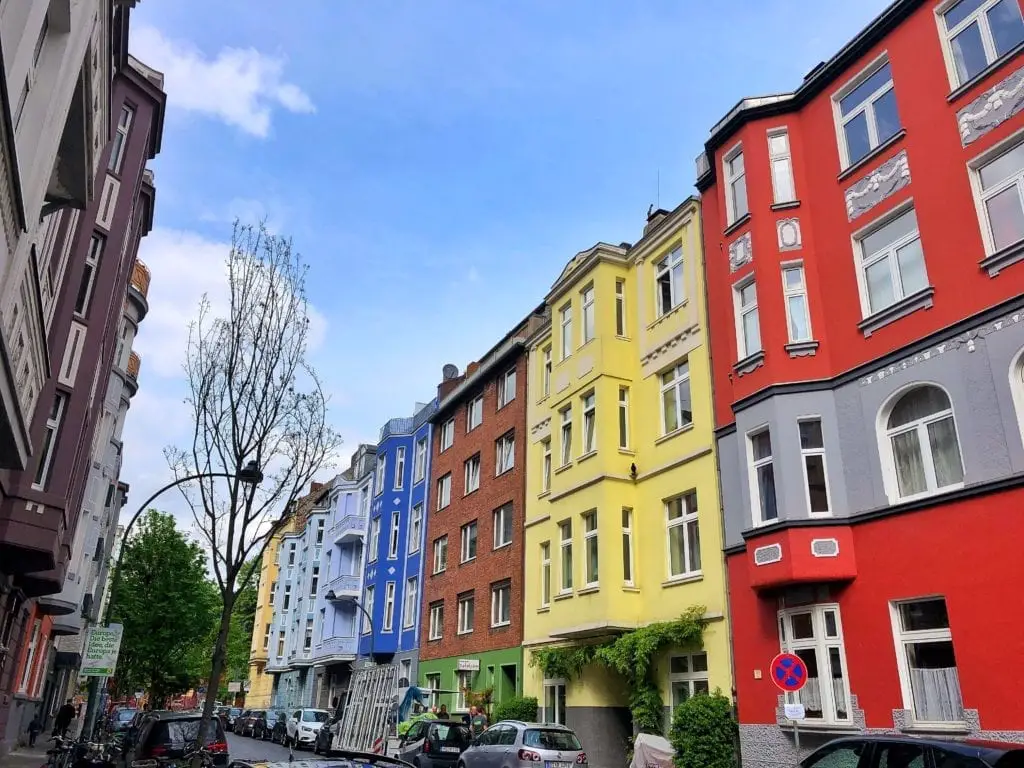
Even today, beautiful old buildings still exist and have been preserved. This is particularly visible at Fürstenplatz.
Friedrichstadt and the surrounding neighborhoods were also upgraded by floral systems around ponds, such as the Kaiserteich and the Schwanenspiegel which are not too far from the Friedrichstadt neighborhood. These beautifully designed facilities were created by Maximilian Weyhe. The Ständehaus in the district represents the historicism of the city. The house was the seat of the state parliament of North Rhine-Westphalia until 1988.
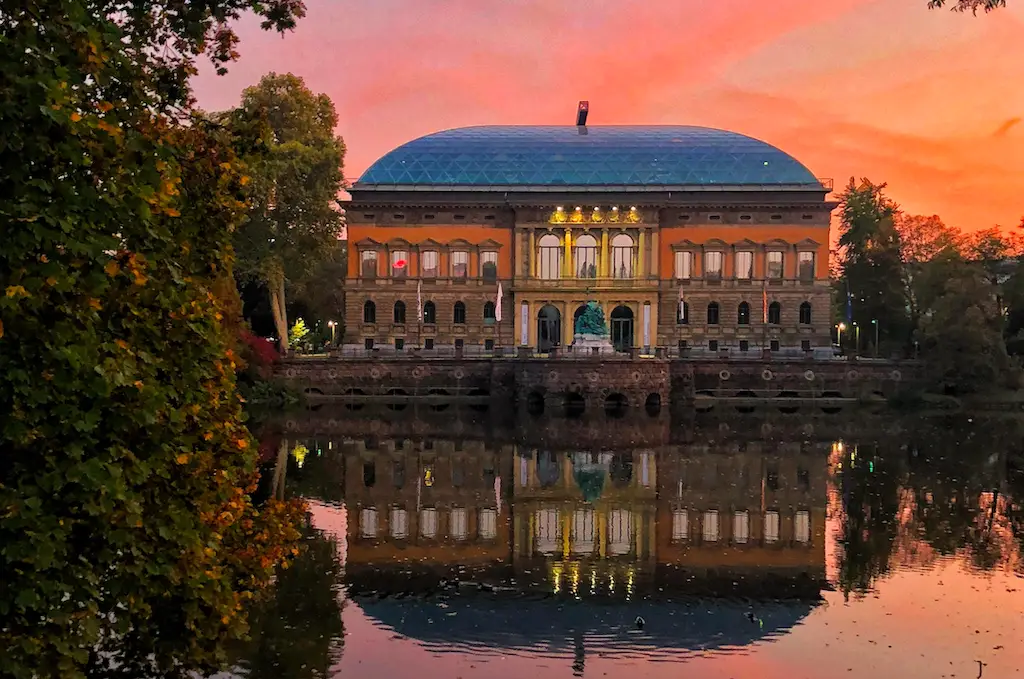
The facts of Friedrichstadt
Friedrichstadt is located between Bilk and the city center (Stadtmitte/Altstadt) and belongs to district 3 It is also touching borders with Oberbilk where you will find the Düsseldorf train station. It has an area of only one km² and approximately 18,675 people are based here. Friedrichstadt is one of the most densely populated districts in the city.
It’s also home to just one of the nicest farmers markets in Düsseldorf.
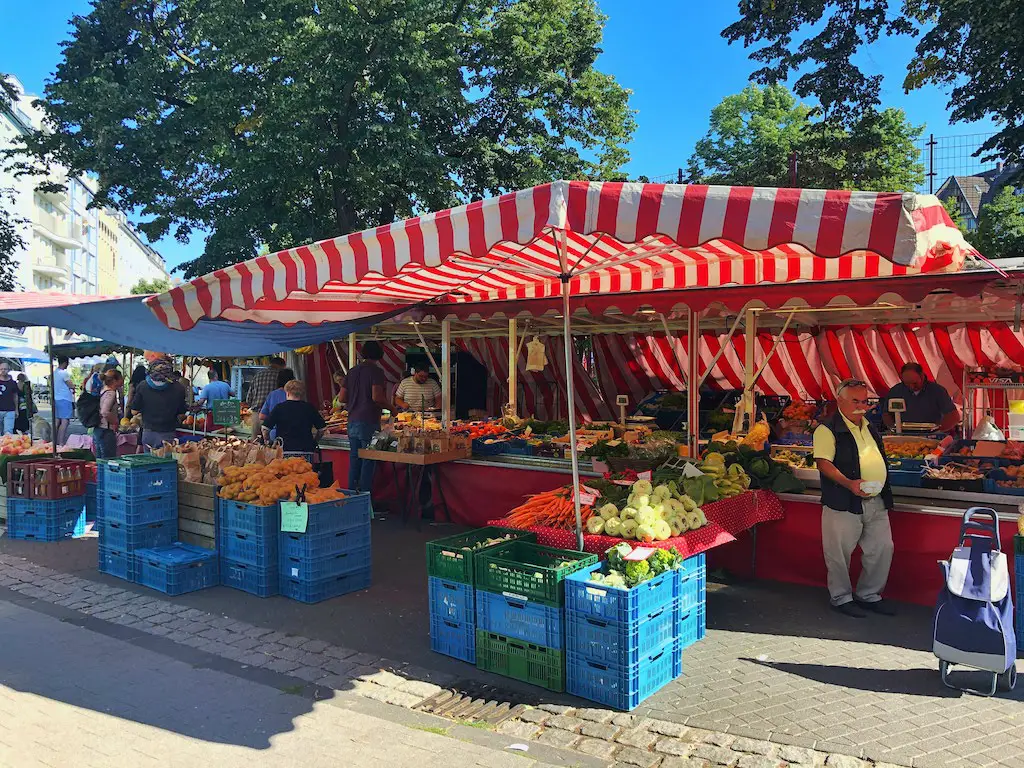
The history of Friedrichstadt
Friedrichstadt is a very young district in the city which is now filled with some amazing places to visit and delicious restaurants.
The foundation stone was laid in the 19th century as Bilk spread to the south. In 1831, a plan was drawn up for Friedrichstadt. However, further development did not take place until 1846. The extension was approved on July 3, 1854. The district was designed on the drawing board and its pattern was arranged like a chessboard. The train station was then opened in 1878, and the industry was also established. This led to an economic boom, but the district did not lose its urban character.
So many buildings from this Wilhelminian era are still preserved. Maximilian Friedrich Weyhe had an idea for a garden city. He is responsible for the beautiful design of the green areas, where there are also ponds. The Ständehaus is now called K21 and is the branch of the state’s art collection. The former estates and the green areas are now part of Unterbilk.
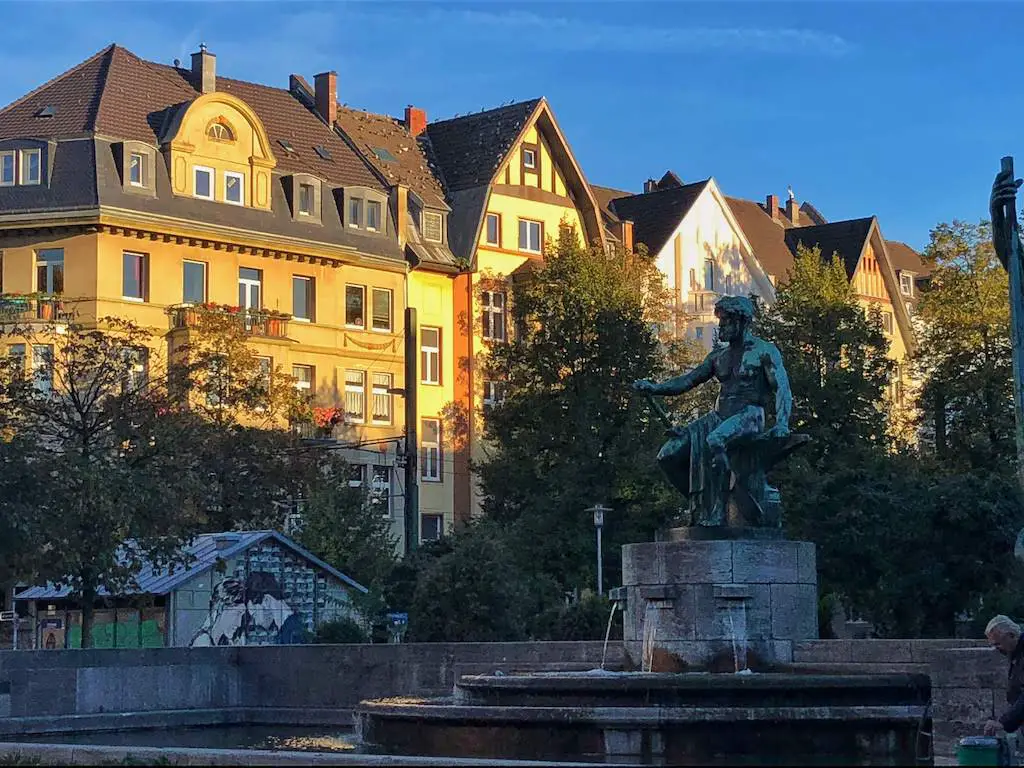
Population of Friedrichstadt
Most of the people in the district are single. There are therefore numerous single households in Friedrichstadt. The district has a very high proportion of foreigners and its residents receive public funds. The proportion of foreigners is 28.2%, with the average of the proportion of foreigners in the city being 17.1%.
Friedrichstadt, due to its central location, is also an affordable and great option for visitors looking into hotel stays in Düsseldorf.
Since the population density is quite high, there are hardly any parks in Friedrichstadt. There is only a playground on Fürstenplatz, which is located in the middle of Friedrichstadt. While the streets in the district are arranged in a checkerboard pattern, however, the square is an exception.
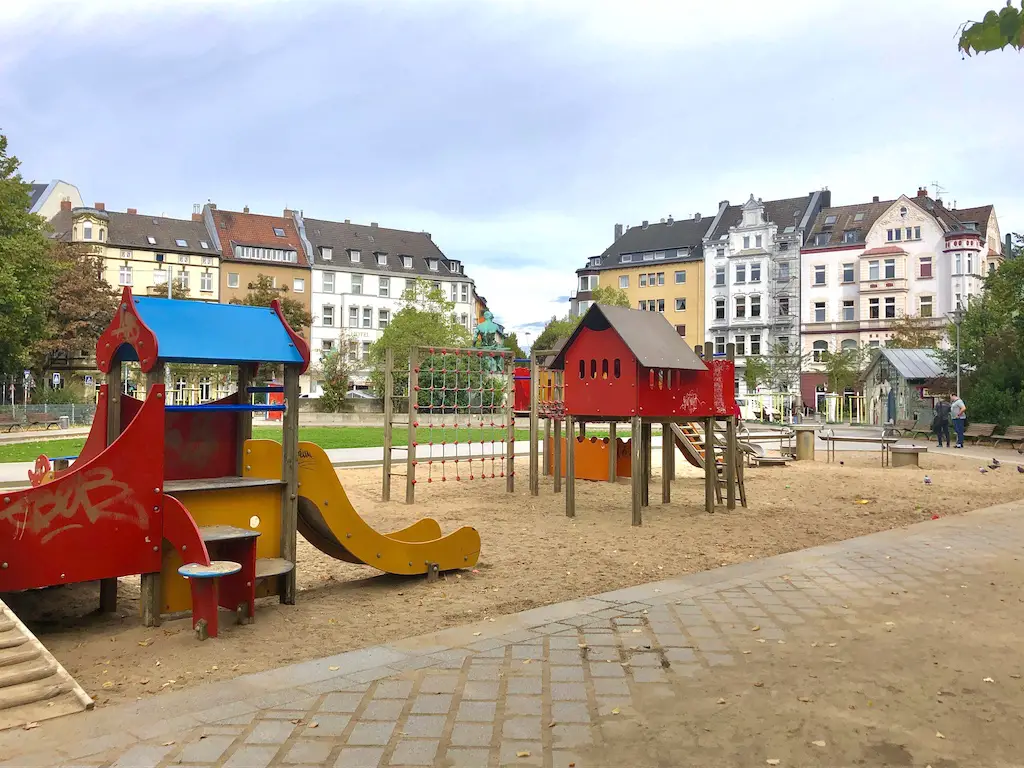
The Friedrichstadt economy
There are high-turnover shopping streets in Friedrichstadt. In the northwest, the pond area forms the border to Friedrichstadt, Unterbilk, and Carlstadt. Jobs can be found in Friedrichstadt in the service sector. For example in legal, business, and tax advice. The Deutsche Rentenversicherung Rheinland has its head office nearby as well as Portigon AG and the Rheinische Sparkassen- und Giroverband.
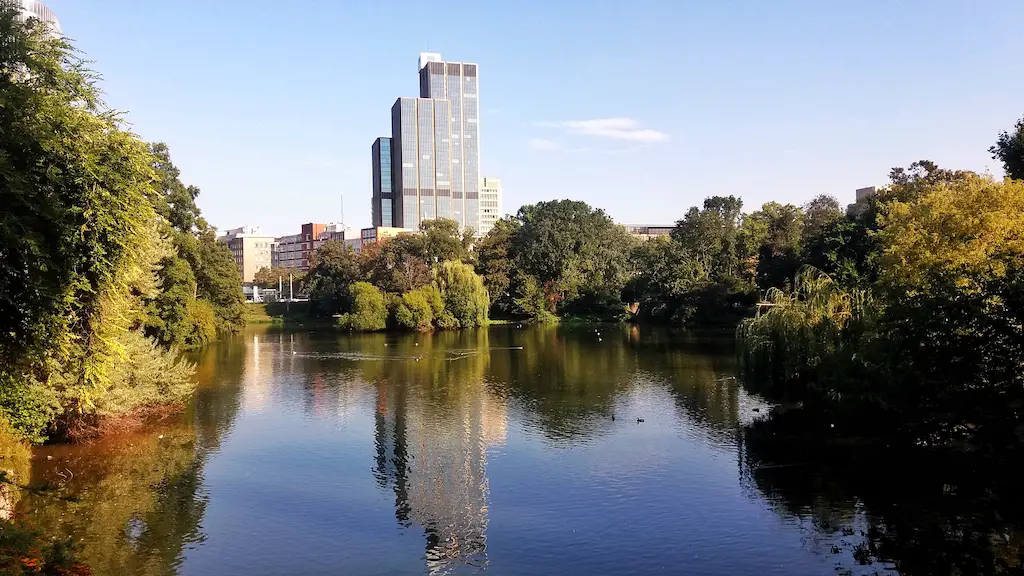
Corneliusstrasse is the most important traffic artery in Friedrichstadt. There is an enormous traffic load here, which is above average. Rush hour times prevail here, especially in the morning and late afternoon.
The famous Maoam candies were made in Friedrichstadt. The company had a location here until 1982. Today the Creative Center is housed here, in the former factory. Many freelancers have their meeting point in the “Garage Bilk”. The German Web Video Prize is organized nearby. Mario Sixtus, a journalist who produces for ZDFinfo, develops the “Electric Reporter” here. There are also areas for network culture, new media, and media literacy. The Hackerspace is located on Hüttenstraße and belongs to the Chaos Computer Club in the city.
St. Antonius Church
The church, built in the late Romanesque style, has a three-aisled basilica. Furthermore, the tower was attached with a pointed tower helmet. However, the tower was destroyed in World War II and was not rebuilt afterward.
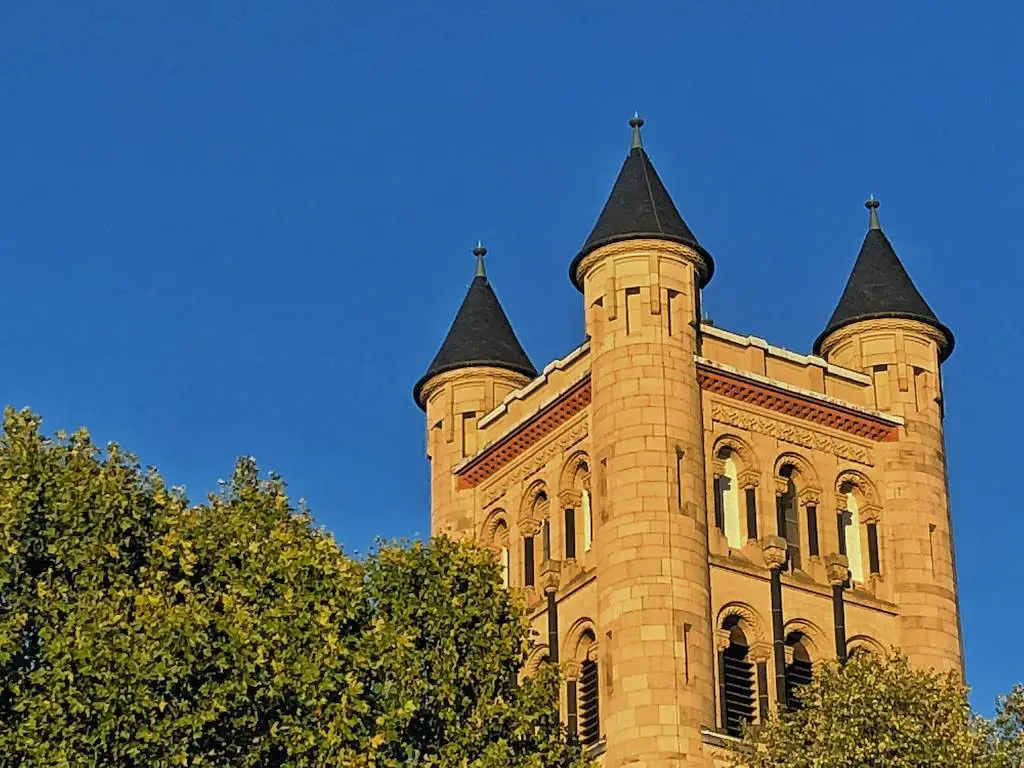
Since there was a large population increase in the 19th century, the Church of St. Peter could no longer look after the faithful alone. Thus a new church building was planned and Wilhelm Sültenfuß received the order. The foundation stone was laid in 1906 and the consecration in honor of St. Anthony took place on June 13, 1909.
In 1912 five bells were integrated into the church. In 1914, St. Antonius was an autonomous community. Four bells were confiscated in 1942. These were melted down as war material and the church bell was recorded in 1940. In this way, they wanted to preserve it for posterity. In 1943 the church was bombed and badly damaged. The incendiary caused considerable destruction. However, soon after the war ended, the Seitenenschieff was rebuilt. Reconstruction began in 1947. The four bells were not melted down and came back to the Church.


